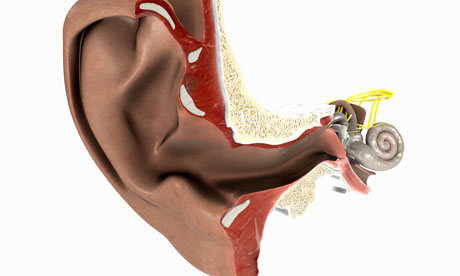
No one likes to think of surgeons making mistakes. But there have been a few times when I have been glad to have a boss present to bail me out – when I was operating on an eardrum for instance.
The eardrum (tympanic membrane) lies at the end of the ear canal and separates the outer from the middle ear. It delivers sound waves to the ossicles. The first of these, the malleus, is attached to the back of the eardrum at a point called the umbo, visible when looking down the ear with an otoscope. The majority of the drum is stiff (pars tensa) but there is a small segment at the top which is thin (pars flaccida).
Any number of ear disorders may cause the eardrum to appear abnormal. The most serious is cholesteatoma, where skin finds its way into the middle ear where it does not belong, and proliferates there. Without surgery, this can have terrible consequences including infection, deafness, facial paralysis or even death. The most common operation on the drum is grommet insertion, to relieve glue ear. A minute hole is made in the pars tensa and a tiny tube inserted to maintain ventilation of the middle ear. This corrects a vacuum which can cause fluid to collect around the ossicles, with resulting infections and hearing loss.
I was performing this operation when I blundered. I had put a grommet in one ear and used a tiny knife to make a hole in the second drum. But when I went to lodge the grommet in the eardrum, it dropped through into the middle ear. It took my skilled consultant just a moment to retrieve the errant grommet and slip it into the correct position.

